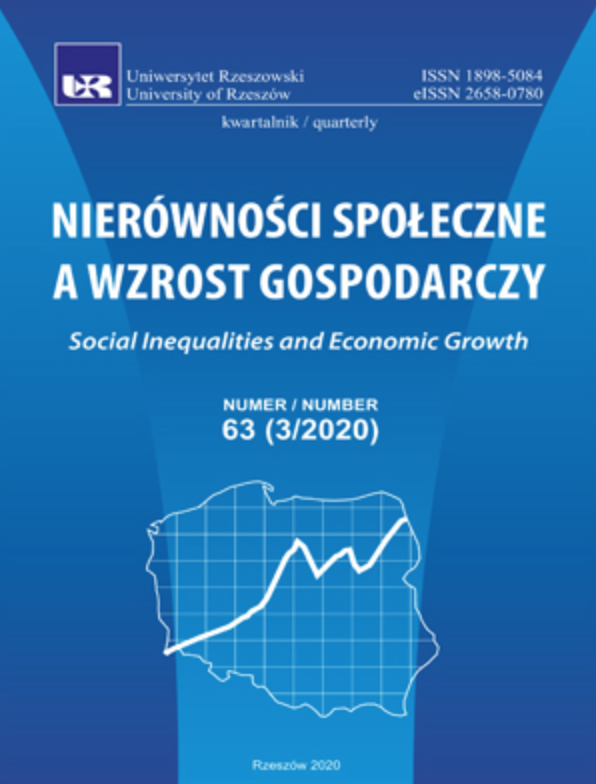Salaries and the logic of national income distribution in a market economy – described using a simple model
Salaries and the logic of national income distribution in a market economy – described using a simple modell
Author(s): Jerzy ŻyżyńskiSubject(s): Socio-Economic Research
Published by: Wydawnictwo Uniwersytetu Rzeszowskiego
Keywords: GDP distribution; wages; money; exports; imports; smile curve
Summary/Abstract: The level of prosperity available is the value of what is produced in the economy. This is a general truth, while the level of well-being of community members is a consequence of the value addedand the rules and mechanisms of national income distribution. The purpose of the paper is to showthe macroeconomic principles of the division of the generated GDP value, based on the exampleof a simple model of the economy in a classic style: the economy is presented as the Great Bakery,which produces loaves of bread shared between employees and its owner, the Baker. The authoruses this model to demonstrate the consequences of the division of the generated surplus, which isthe Baker’s profit from three sources: development-oriented investments and the savings associatedwith them, the public sector and exportation. The author shows the structural consequences ofreducing wages and shifting the tax burdens to the employees. He proves that the reduction of laborcosts should be accompanied by an increase in the tax burdens imposed on companies – the Bakerin his model. These rules of division have macroeconomic consequences and the author shows theeffects for Poland’s position in a group of countries, presented as international comparisons (mainlyOECD countries). The author shows that one of the key factors determining prosperity is the placeof industry in the product development cycles produced by the global division of production. Theamount of added value obtained at various stages of these production cycles is illustrated by the socalled smile curve. The author shows the international division of labor has led to the location of theindustries of post-communist countries, including Poland, around the minimum of this curve. Thiscauses the average level of wages and, consequently, welfare to be low. The analysis leads to theconclusion that a policy of structural changes is needed, one that will shape this division so that thecountry regains full production cycles and thus strengthens its economy. The author discusses thesimplified thesis formulated by Jeffrey Sachs that sustainable development is the most important forprosperity. The author justifies the thesis that it is not so much development as the amount of addedvalue generated by industry and the mechanisms of its distribution, and points out that, as JustinYifu Lin observes, it is the structural changes which will lead to an increase in added value andmodifications in the principles of its distribution, so as to increase social well-being.
Journal: Nierówności Społeczne a Wzrost Gospodarczy
- Issue Year: 2020
- Issue No: 63
- Page Range: 69-112
- Page Count: 44
- Language: English

